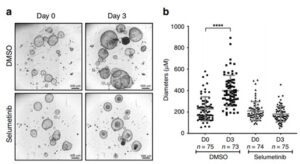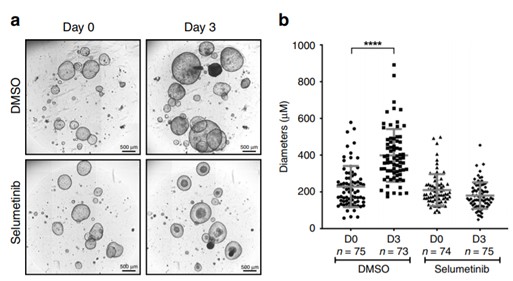 Scientists out of Vanderbilt and the University of North Carolina at Chapel Hill have established two separate organoid lines derived from active Kras-induced mouse stomach tissue. These organoid lines embody an in vitro system displaying characteristics of abnormal cells within the tissue known as dysplasia. The study published in Nature Communications provides further insights into gastric carcinogenesis and the presence of distinct dysplastic stem cell populations.
Scientists out of Vanderbilt and the University of North Carolina at Chapel Hill have established two separate organoid lines derived from active Kras-induced mouse stomach tissue. These organoid lines embody an in vitro system displaying characteristics of abnormal cells within the tissue known as dysplasia. The study published in Nature Communications provides further insights into gastric carcinogenesis and the presence of distinct dysplastic stem cell populations.
Beyond isolating cells and generating the organoids, one important technique was used to study the overall growth and number of viable organoids. To do this the group used the GelCount, a system normally used in clonogenic or tumor-forming assays for counting and sizing colonies, and easily transferred this capability to quantitatively assess their organoids across replicates. In future studies, the group will also be able to use the resolving power of the GelCount to study therapeutic effects and any consequential differences in organoid growth dynamics.
For more information on this study please follow this link to the paper.
If you would like more information on how this team used the GelCount in their organoid research or how you may be able to utilize a system like this, please feel free to reach out to info@scintica.com and one of our representatives will be happy to help.
References:
Min, J., Vega, P.N., Engevik, A.C. et al. Heterogeneity and dynamics of active Kras-induced dysplastic lineages from mouse corpus stomach. Nat Commun 10, 5549 (2019). https://doi.org/10.1038/s41467-019-13479-6
